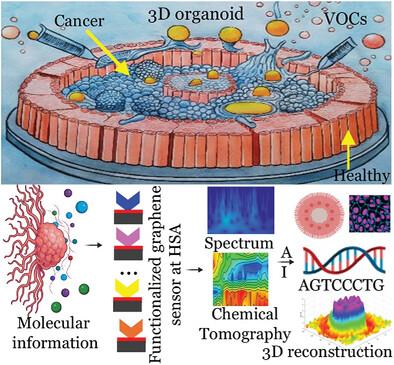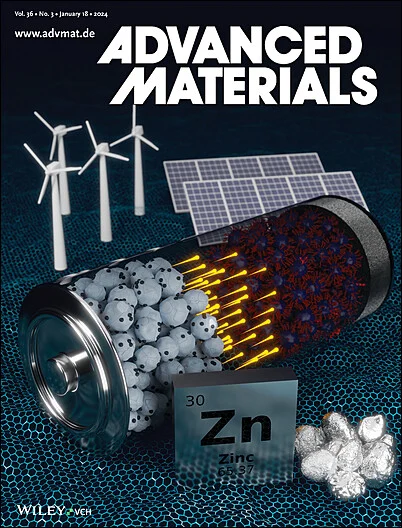Chemical Tomography of Cancer Organoids and Cyto‐Proteo‐Genomic Development Stages Through Chemical Communication Signals
IF 27.4
1区 材料科学
Q1 CHEMISTRY, MULTIDISCIPLINARY
引用次数: 0
Abstract
Organoids mimic human organ function, offering insights into development and disease. However, non‐destructive, real‐time monitoring is lacking, as traditional methods are often costly, destructive, and low‐throughput. In this article, a non‐destructive chemical tomographic strategy is presented for decoding cyto‐proteo‐genomics of organoid using volatile signaling molecules, hereby, Volatile Organic Compounds (VOCs), to indicate metabolic activity and development of organoids. Combining a hierarchical design of graphene‐based sensor arrays with AI‐driven analysis, this method maps VOC spatiotemporal distribution and generate detailed digital profiles of organoid morphology and proteo‐genomic features. Lens‐ and label‐free, it avoids phototoxicity, distortion, and environmental disruption. Results from testing organoids with the reported chemical tomography approach demonstrate effective differentiation between cyto‐proteo‐genomic profiles of normal and diseased states, particularly during dynamic transitions such as epithelial‐mesenchymal transition (EMT). Additionally, the reported approach identifies key VOC‐related biochemical pathways, metabolic markers, and pathways associated with cancerous transformations such as aromatic acid degradation and lipid metabolism. This real‐time, non‐destructive approach captures subtle genetic and structural variations with high sensitivity and specificity, providing a robust platform for multi‐omics integration and advancing cancer biomarker discovery.

求助全文
约1分钟内获得全文
求助全文
来源期刊

Advanced Materials
工程技术-材料科学:综合
CiteScore
43.00
自引率
4.10%
发文量
2182
审稿时长
2 months
期刊介绍:
Advanced Materials, one of the world's most prestigious journals and the foundation of the Advanced portfolio, is the home of choice for best-in-class materials science for more than 30 years. Following this fast-growing and interdisciplinary field, we are considering and publishing the most important discoveries on any and all materials from materials scientists, chemists, physicists, engineers as well as health and life scientists and bringing you the latest results and trends in modern materials-related research every week.
 求助内容:
求助内容: 应助结果提醒方式:
应助结果提醒方式:


